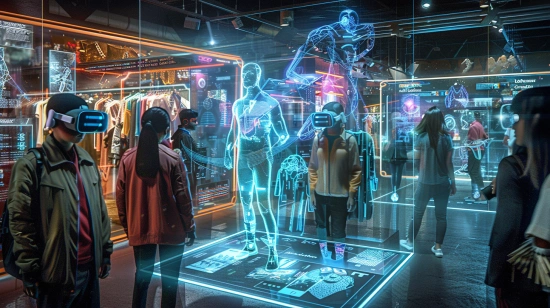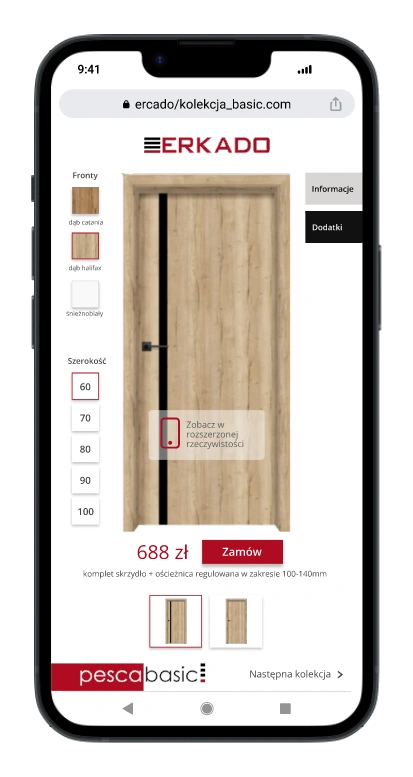What is characteristic of AR?

In today's fast-paced technological world, one of the most fascinating achievements is augmented reality (AR). AR changes our perception of the world by combining virtual elements with physical reality, opening up entirely new possibilities. In this article, we will take a closer look at what AR is, how it works, its applications in various sectors, and its key characteristics. I invite you to read on to gain a deeper understanding of the potential and future of this innovative technology.
Introduction to AR
Augmented reality (AR), one of the most groundbreaking technologies of recent years, serves as a bridge connecting the physical world with the digital. It operates by superimposing computer-generated images onto reality, allowing users to see the real world enriched with virtual elements. This technology, using devices such as smartphones or special AR glasses, opens up new possibilities in various fields – from commerce and marketing to education and entertainment. The growing popularity of AR is linked to the increasing availability of mobile devices with advanced cameras and powerful processors, enabling a wide audience to use this technology. AR changes the way we experience the world, offering richer, interactive, and personalized experiences, a great example of which are 3D product configurators using augmented reality (but it's worth remembering that not all of them have to use this technology!), which allow you to transfer your products to the digital world and thus enable you to view them from different perspectives, allowing consumers to match them perfectly to their preferences without having to leave home.
How does AR work?
Augmented reality (AR) operates on the principle of real-time image and scene recognition, and then overlays virtual elements onto them. This technology utilizes artificial intelligence (AI) software, which analyzes data gathered by the device's camera, for example, a smartphone. AI interprets the images and the space where the user is located, and based on this, places three-dimensional digital objects in it. For instance, when the phone's camera is pointed at a piece of furniture, the AR software can overlay virtual decoration or product information on it. As a result, the user sees the physical reality enriched with digital elements that can be interactive and adapted to the context they are in.
AR vs. VR
Before delving into the characteristic features of AR, let's emphasize that this technology is not the same as virtual reality (VR), with which it is often conflated. What are the differences?
It's important to know that augmented reality (AR) and virtual reality (VR) are two different technologies that change the way we experience and interact with our surroundings. The main difference between them lies in how each of these technologies connects the virtual world with the real one.
- AR introduces digital elements into the real world, allowing users to interact with both these worlds simultaneously.
- In contrast, VR completely immerses the user in a virtual world, isolating them from physical reality.
- VR experiences usually require wearing special VR goggles, which cut off the user from their surroundings, transporting them to a completely digital environment.
- AR, unlike VR, does not require the use of special equipment and is more accessible as it can be used on popular mobile devices.
You can read more about the differences between AR and VR in the post titled "Differences Between AR and VR."
What is characteristic of augmented reality?
Augmented reality (AR) is characterized by several unique features that distinguish it from other technologies. Firstly, AR operates in real-time, offering users immediate interactivity and the ability to manipulate virtual elements. It is a three-dimensional technology, allowing for the creation of realistic 3D visualizations and experiences. A key aspect of AR is also its ability to combine the virtual world with the real one, opening new possibilities for user interaction and experiences. This integration allows for the creation of immersive and immersive environments that can be used for entertainment, education, business, or marketing purposes.
To better understand what AR specifically is, let's focus on each feature separately.
Real-Time interactivity
One of the main characteristic features of AR is its ability to operate in real-time. Users can experience immediate interactivity with virtual elements that are overlaid onto their real environment. This functionality allows for dynamic and engaging experiences, in which users can manipulate virtual objects in a natural and intuitive way. This instant response of AR to user actions is key to creating compelling and immersive experiences.
What is a characteristic of augmented reality? Three-dimensionality of AR
Augmented reality is inherently a three-dimensional technology. This allows for the creation of realistic visualizations and models, which users can view and analyze from various perspectives. The three-dimensionality of AR is particularly important in applications that require accurate representation of objects and scenes, such as interior design, education, or medical simulations. Thanks to this feature of AR, users can gain a deeper understanding of objects and scenarios, which is impossible with two-dimensional images.
Integration of the virtual world with the real world
A key aspect of augmented reality is its ability to combine the virtual world with the real one. AR does not replace the physical world but complements it by overlaying virtual elements onto real images. This integration allows users to interact with virtual elements within the context of their physical environment. This combination opens new possibilities for various user experiences, from educational to recreational, allowing them to enrich their real world with additional digital information and elements.
Immersion and immersivity of AR environments
Augmented reality enables the creation of immersive and immersive environments that enhance the user experience. With AR, users can immerse themselves in a virtual world that is integrated with their real surroundings. This combination of the real world with virtual elements creates unique and memorable experiences, which can be utilized in many fields – from gaming and entertainment, through education and training, to marketing and product presentations. The immersivity of AR is crucial for creating deep and engaging experiences that have a significant impact on the user.
What is the characteristic of augmented reality? Summary
Augmented reality opens the doors to a world where the boundaries between physical and digital are increasingly fluid. As shown in the article, AR has a wide range of applications in business, education, medicine, entertainment, and many other fields. Thanks to its key features, such as real-time interactivity, three-dimensionality, the integration of the virtual with the real world, and the ability to create immersive environments, AR is revolutionizing the way we experience and interact with the world. In the face of continuously advancing technological innovations, AR will undoubtedly play an increasingly important role in shaping our future.
Do you like the post? Share to others!

Krzysztof Basista
COO
For years, he has been involved in AR / VR projects ranging from entertainment to heavy industry. Always looking for problem solving through technology.
Contact us
Related posts

In the era of digital transformation, consumer behaviors have undergone significant changes, redefining the way we make purchasing decisions and interact with brands. In this article...

In the era of digital commerce, where competition is at an all-time high and customer expectations are rising, the use of innovative technologies is becoming a key factor...

Today, retail stands at the crossroads between adaptation and revolution, facing rapidly changing technological trends. In our article today, we will explore how modern...

Augmented reality (AR) is a technology that combines the physical and digital worlds to create an interactive experience. AR technology is used in a variety of industries...

Have you ever wondered how to make your product stand out in the thicket of competition that is constantly flooding the market? How to make it your novelty that catches...

AR glasses, also known as augmented reality glasses or mixed reality glasses, are wearable devices that overlay digital information onto the user's real environment...






